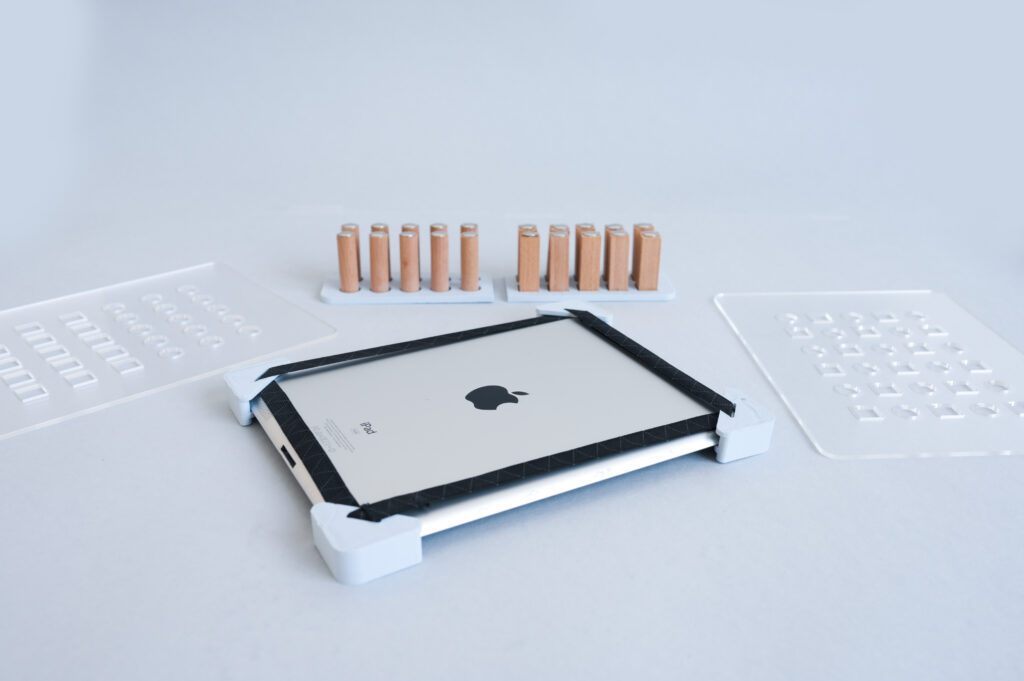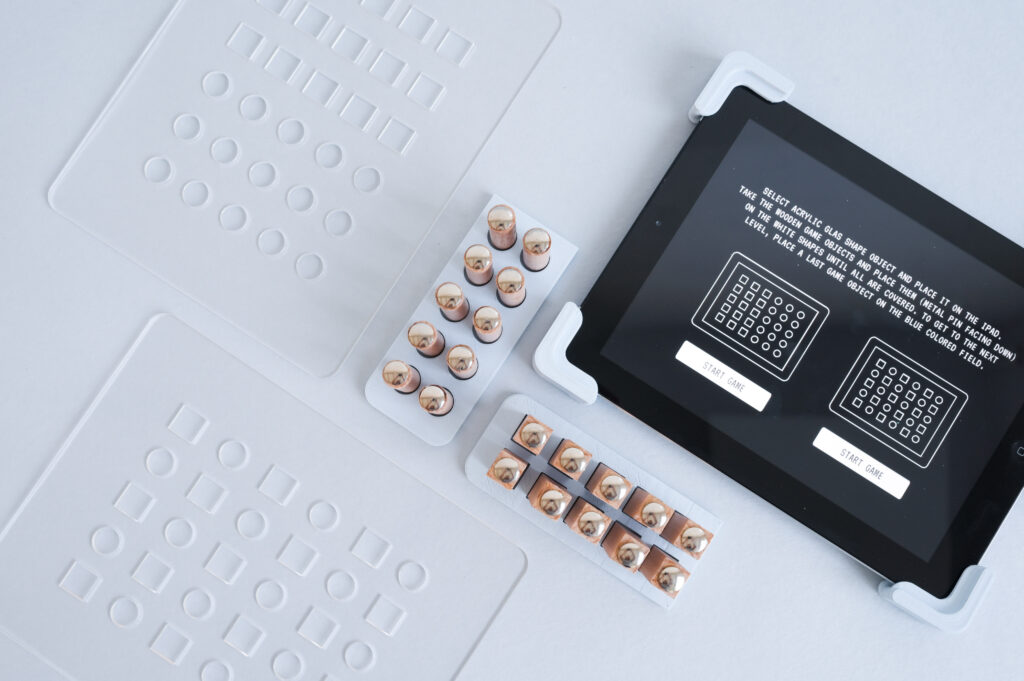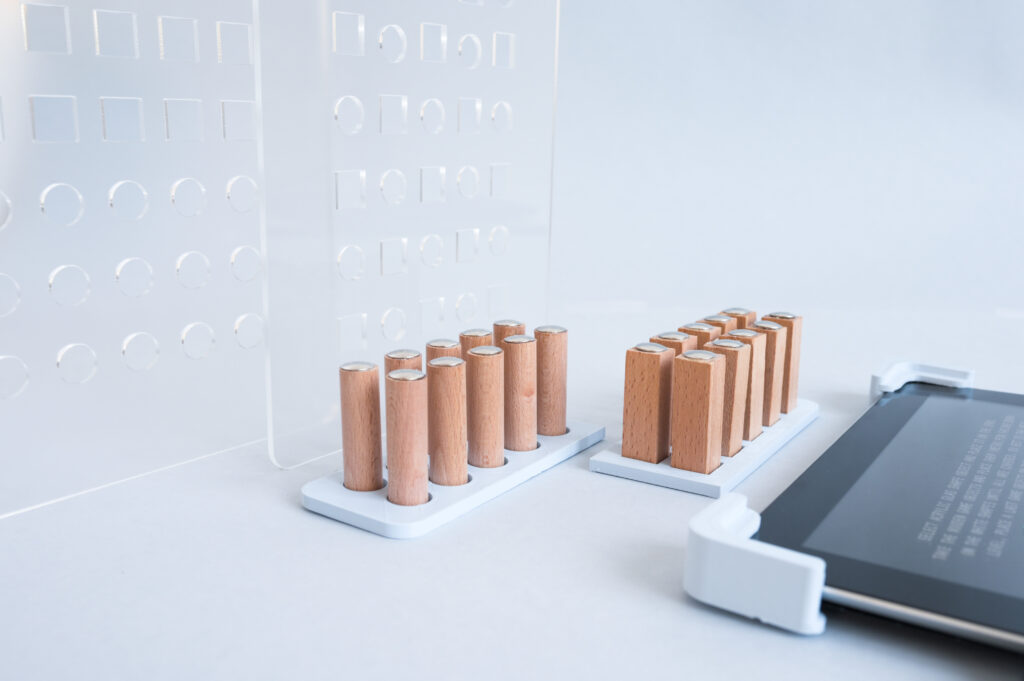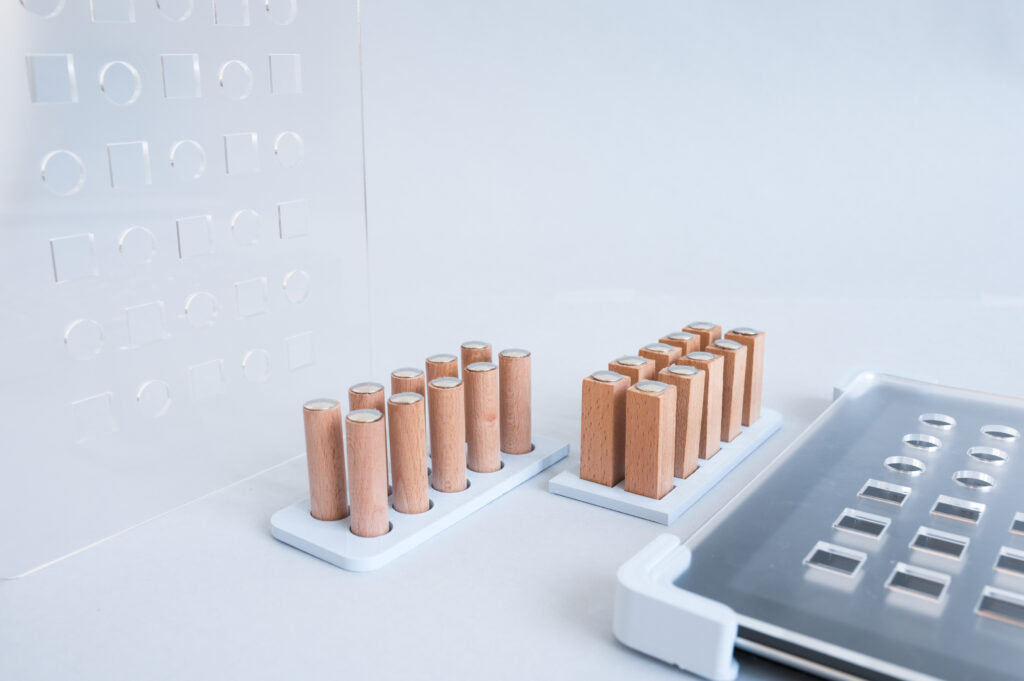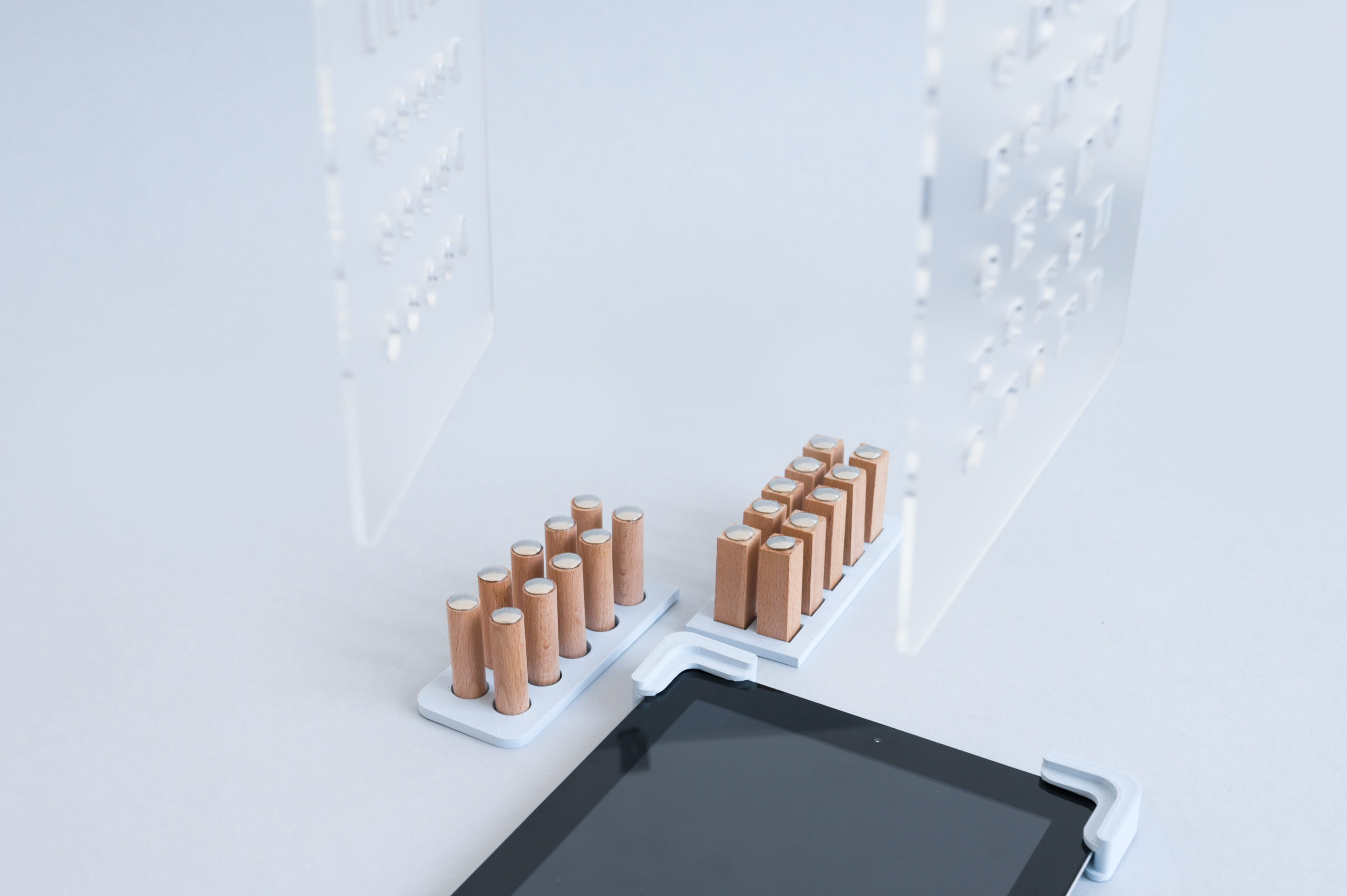When it comes to neurological rehabilitation the key aspect to regaining function is repetition. Because of the neuroplasticity of the brain after suffering injuries the rule of “use it or lose it” comes into play. Patients have to constantly engage their brains to create new pathways in the brain tissue. Repetition can be pretty tedious though so motivation is destined to decline over time. The goal was to create a way for these exercises to more engaging and fun, upgrading from simple board games (like solitaire which is the #1 example) to a more technologically advanced approach while still aiming for an affordable, easily producible kit. Ideally the game can be included in a patient’s daily life in order to measure progress by analyzing game contents and combining them into visual reports.
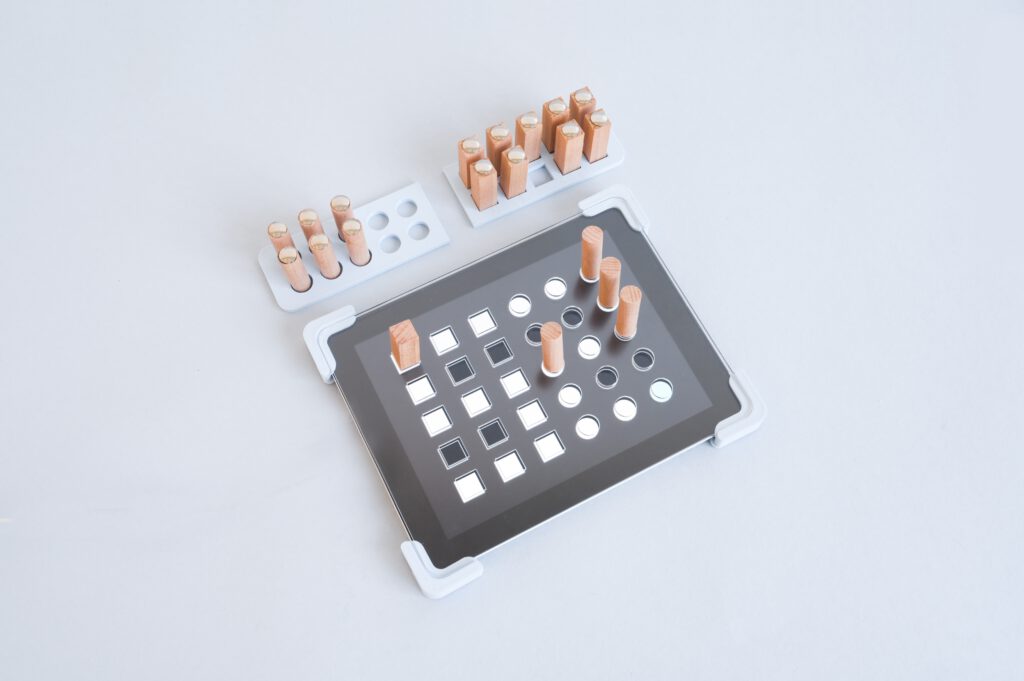
For this application,the tablet clamps were 3D modeled and printed, acrylic sheets laser-cut and the wooden pieces hollowed and filled with steel rods connecting to the round end-caps in order to create a conductive piece to trigger the touch input. The application was coded and realised in Unity game engine.
